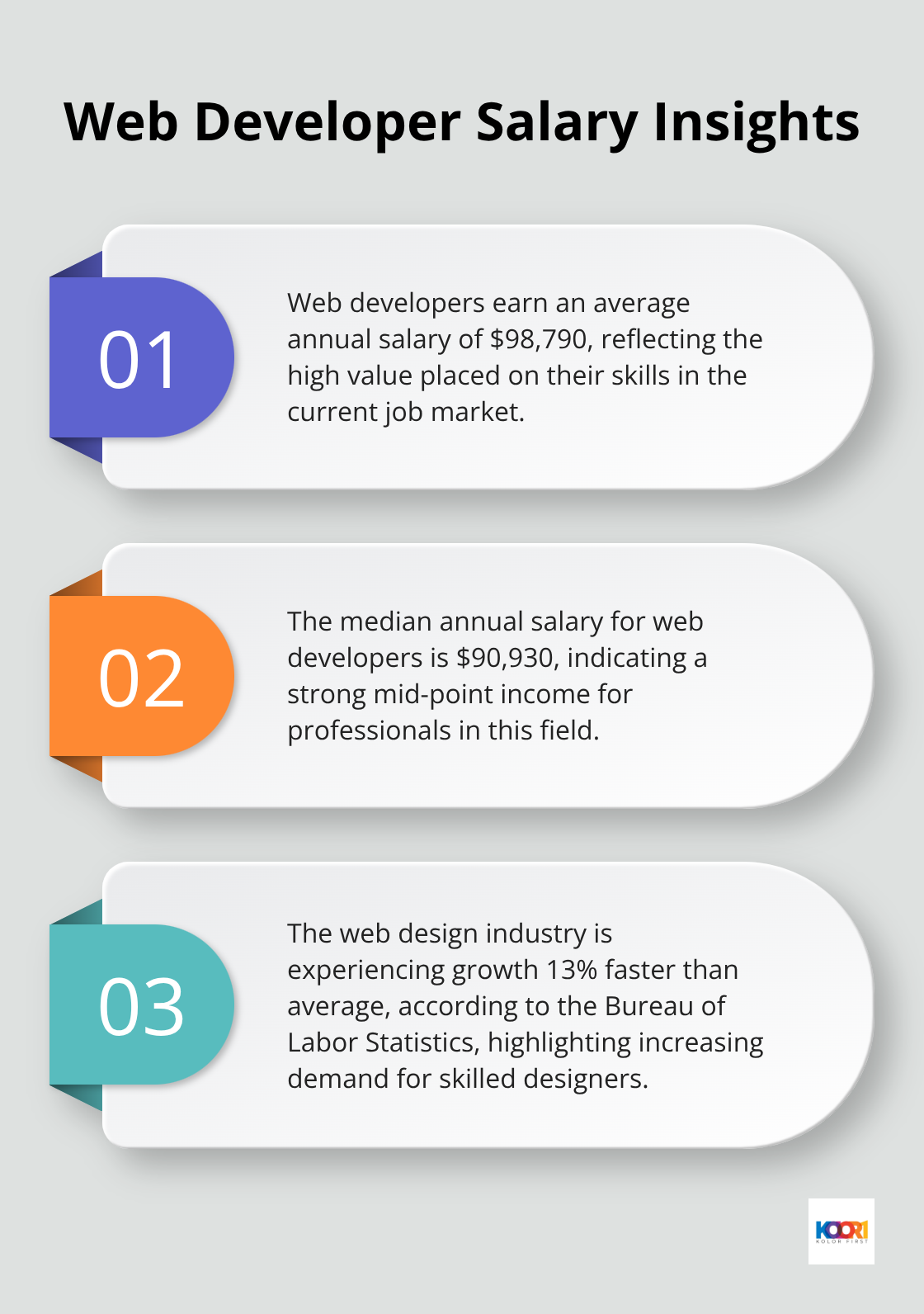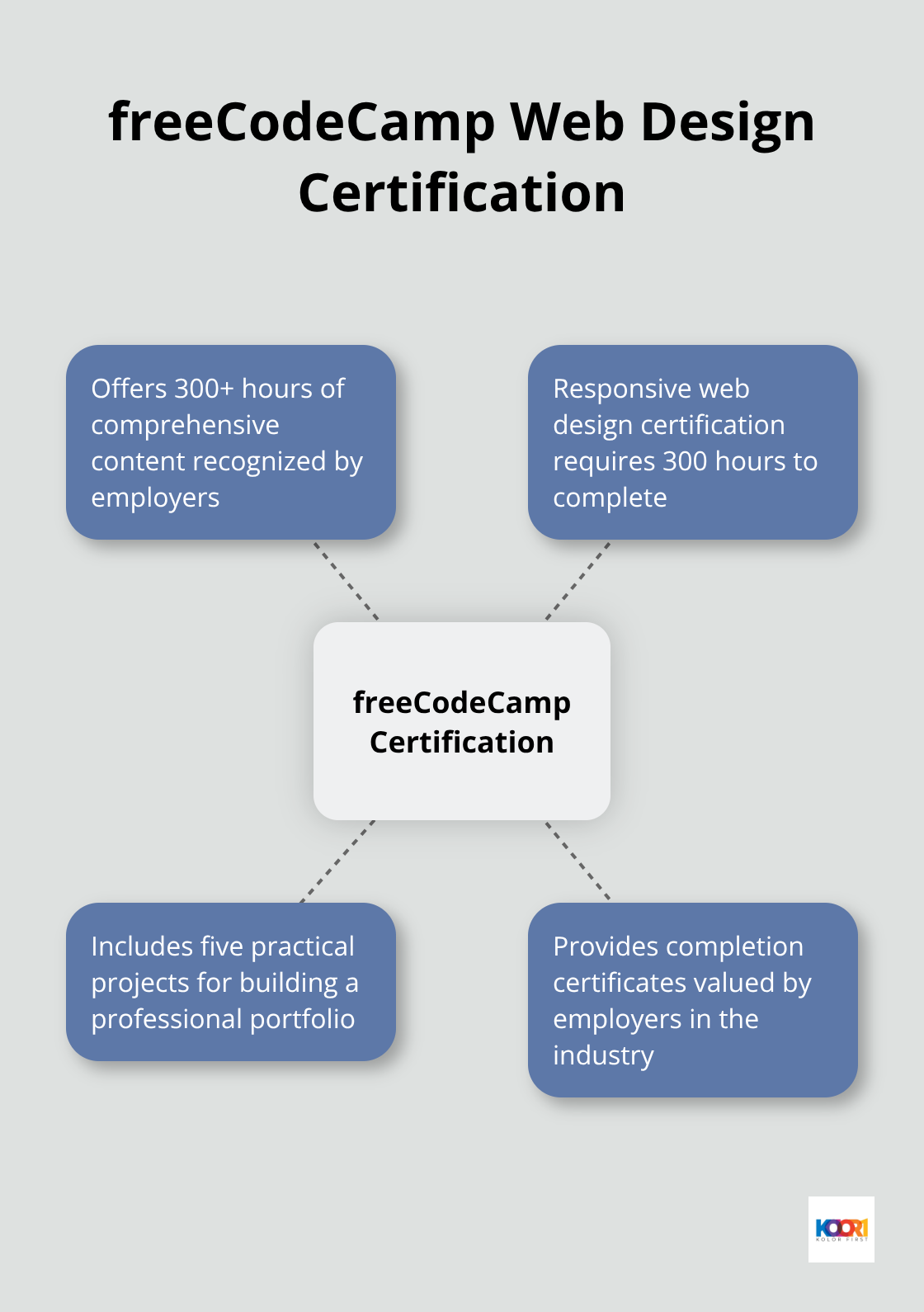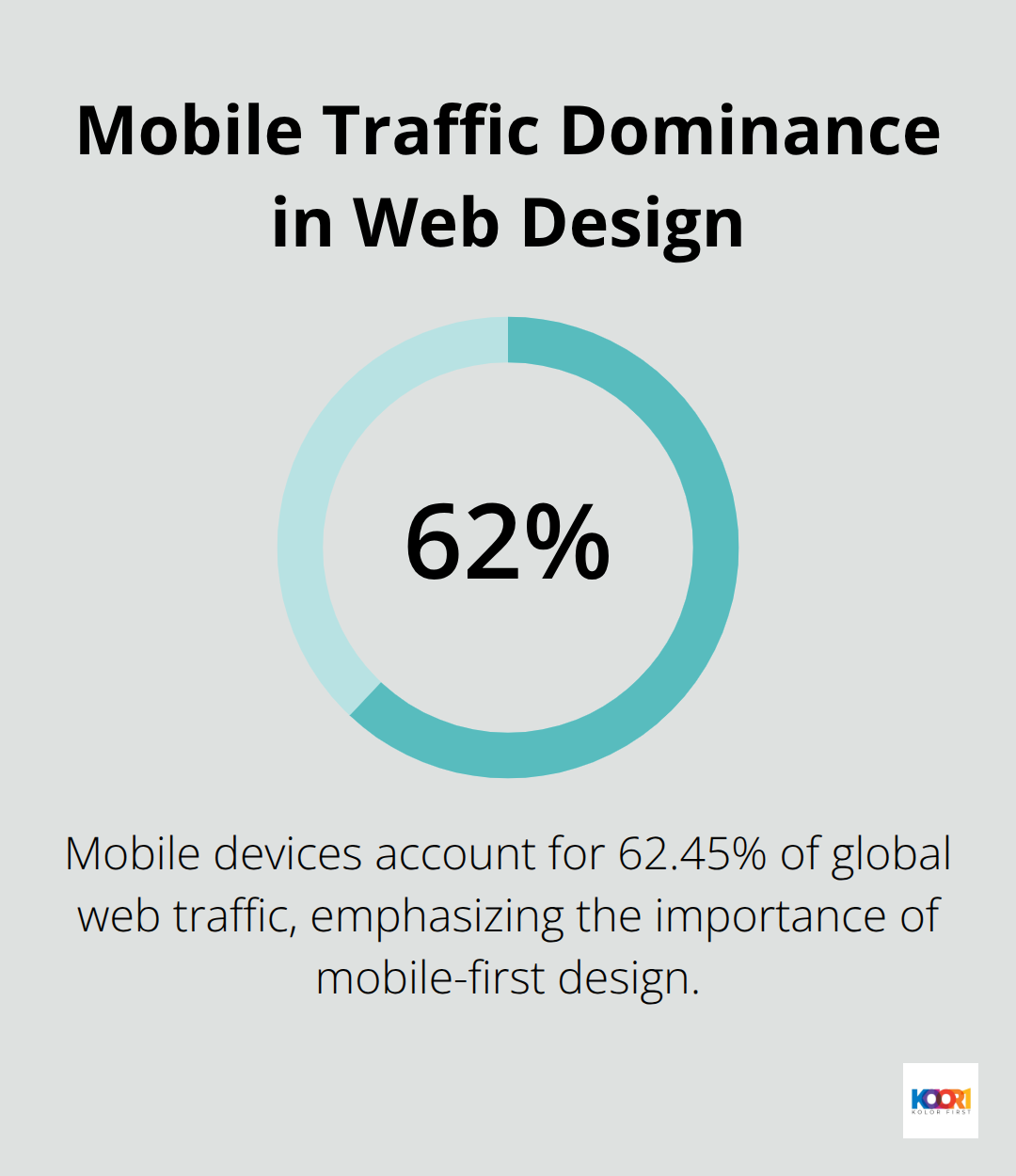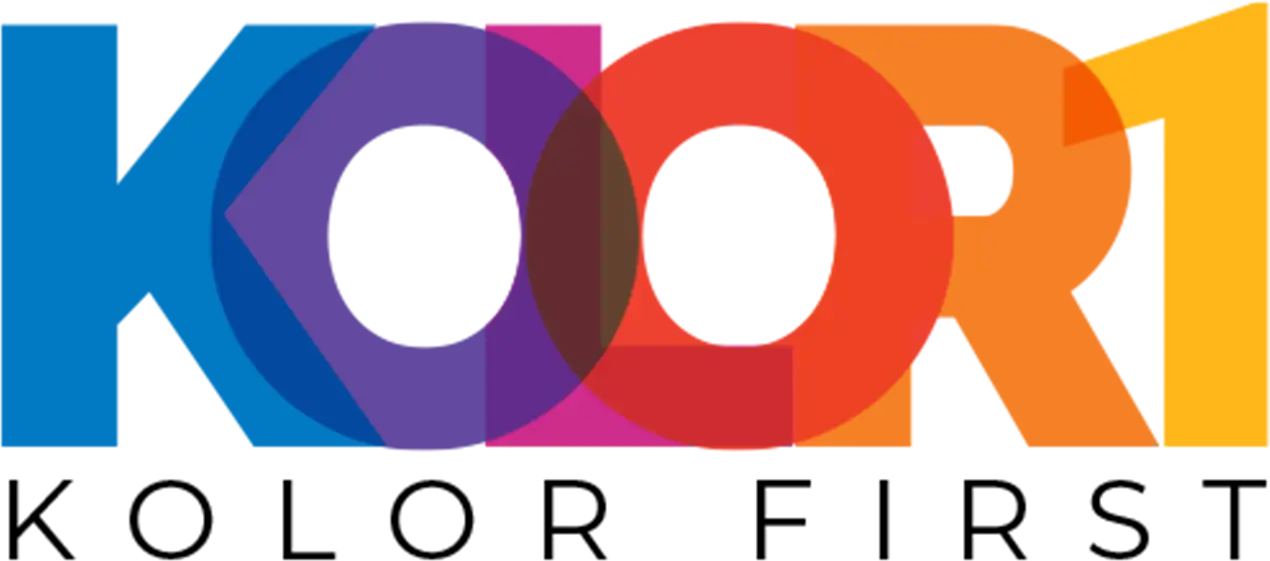The web design industry is booming, with demand for skilled designers growing 13% faster than average according to the Bureau of Labor Statistics. Online web design courses offer the perfect entry point into this lucrative field.
We at Kolorfirst LLC know that choosing the right program can make or break your design career. The wrong course wastes time and money, while the right one opens doors to six-figure opportunities.
What Makes a Web Design Course Worth Your Investment
Course Curriculum and Core Technologies
The curriculum separates amateur courses from professional training programs. Quality programs teach HTML5, CSS3, and JavaScript as core foundations, plus modern frameworks like React or Vue.js. Web developers have an average annual salary of $98,790 and a median annual salary of $90,930.
Skip courses that focus heavily on outdated technologies or spend excessive time on basic theory without hands-on practice. The best programs balance theoretical knowledge with practical projects that mirror real-world scenarios.

Instructor Credentials and Industry Experience
Instructor credentials matter more than flashy marketing promises. Seek courses taught by designers with active industry experience, not just academic backgrounds. Check if instructors have worked at recognized companies like Adobe, Google, or established design agencies.
The best programs feature multiple instructors who specialize in different areas rather than single generalists. This approach gives you exposure to diverse perspectives and specialized expertise across various web design disciplines.
Learning Format and Flexibility Options
Flexible learning formats prove essential for working professionals. Asynchronous courses with lifetime access outperform live-only sessions that create scheduling conflicts. Treehouse allows students to complete programs in 6-12 months on their own schedule, while freeCodeCamp offers 300+ hours of self-paced content.
Programs that offer both video lessons and interactive exercises produce better retention rates than passive video-only formats (studies show 40% higher completion rates). Avoid courses that require strict attendance schedules unless you can commit fully to live sessions.
Now that you understand what separates quality courses from mediocre options, let’s examine the top platforms where you can find these high-caliber programs.
Which Platforms Offer the Best Web Design Training
freeCodeCamp leads the free education space with 300+ hours of comprehensive content and completion certificates that employers recognize. Their responsive web design certification requires 300 hours to complete and includes five practical projects that build a professional portfolio.

Udemy hosts over 4,000 web design courses with lifetime access starting at $16.99, while Coursera partners with universities like University of Michigan to deliver accredited programs that average 70 hours of instruction. TreeHouse provides structured paths that span 43 hours with monthly subscriptions at $25, plus interactive community support that helps students solve challenges faster than solo study.
Platform Costs and Value Comparison
Codecademy Pro charges $39.99 monthly but delivers interactive environments that can improve knowledge retention by up to 60% compared to traditional learning methods. Frontend Masters costs $390 annually yet provides access to industry experts from companies like Netflix and Microsoft who teach techniques used in production environments. The W3CX Frontend Developer Program on edX offers 140 hours of university-level instruction for free, which makes it the best value for comprehensive education. Skillcrush focuses specifically on career transitions with 3-month programs at $549 that include one-on-one mentorship and job placement assistance (84% of graduates find employment within six months).
Quality Metrics and Professional Support
Course ratings above 4.5 stars with over 10,000 reviews indicate proven educational value, while programs with fewer than 1,000 students often lack comprehensive feedback systems. Quality programs provide GitHub integration for portfolio development, career counseling sessions, and direct connections to hiring partners. Udacity’s Frontend Nanodegree includes project reviews from industry professionals and guarantees job placement within six months or offers full tuition refunds. TreeHouse maintains partnerships with over 1,000 companies for direct hiring opportunities (which significantly improves job prospects for graduates).
These platform features and support systems directly impact the skills you’ll develop throughout your web design education.
Which Skills Actually Matter for Web Design Success
HTML5 and CSS3 form the backbone of modern web development, but semantic markup mastery separates professional designers from beginners. CSS Grid and Flexbox handle 95% of responsive design challenges without complex workarounds. JavaScript proficiency becomes non-negotiable for interactive elements, with jQuery knowledge declining as vanilla JavaScript adoption grows. The Bureau of Labor Statistics reports web developers earn median salaries of $90,930, with frontend specialists commanding higher rates when they master React or Vue.js frameworks.
Advanced CSS Techniques That Employers Demand
CSS preprocessors like Sass reduce development time by 40% through variables, mixins, and nested rules that streamline stylesheet management. Animation and transition effects require CSS keyframes and transform properties – skills that differentiate portfolio projects from static designs. Browser compatibility tests across Chrome, Firefox, Safari, and Edge prevent costly redesigns, while CSS debug tools in developer consoles solve layout issues faster than guesswork approaches.
User Interface Design Principles That Convert
Color psychology directly impacts user behavior, with studies showing blue increases trust by 15% while red creates urgency for call-to-action buttons. Typography hierarchy uses font-weight, size, and spacing to guide user attention through content systematically. White space utilization improves comprehension rates by 20% according to design research (making content scanning effortless for visitors). Mobile-first design approaches account for 62.45% of global web traffic, requiring touch-friendly interfaces with minimum 44px tap targets for optimal usability across devices.
Responsive Design Implementation
Media queries adapt layouts across different screen sizes, with breakpoints at 768px and 1024px covering most device categories. Flexible grid systems scale content proportionally rather than fixed pixel measurements (which break on various screen sizes). Image optimization techniques reduce load times by 60% through proper compression and format selection, while viewport meta tags control mobile display behavior across different browsers and devices.

Final Thoughts
Quality online web design courses teach HTML5, CSS3, and JavaScript fundamentals through hands-on projects that build professional portfolios. Beginners should choose freeCodeCamp’s comprehensive 300-hour program or Udemy’s affordable courses at $16.99. Intermediate learners benefit from TreeHouse’s structured 43-hour paths with community support, while advanced students gain value from Frontend Masters’ annual access to industry experts.
The web design field offers median salaries of $90,930 with 13% faster growth than average occupations. Employers demand responsive design skills, CSS Grid mastery, and JavaScript proficiency from candidates. Portfolio development through practical projects proves more valuable than certificates alone (since employers prioritize demonstrated skills over credentials).
Choose one platform that matches your budget and complete foundational courses before advancing to specialized frameworks like React or Vue.js. Consistent practice and real-world application transform course knowledge into professional expertise. We at Kolorfirst LLC help designers develop the skills that open doors to lucrative opportunities in this growing industry.






